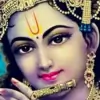Panchkanya: Women of Substance
by Pradip Bhattacharya
A traditional Sanskrit exhortation runs thus:
Ahalya Draupadi Kunti Tara Mandodari tatha
panchakanya svaranityam mahapataka nashaka
"Remembering ever the virgins five '
Ahalya, Draupadi, Kunti, Tara and Mandodari
Destroys the greatest sins."
Two things strike us in this verse: the epithet kanya (virgin, maiden), not nari (woman); and the unusual combination of names that redeem the sinner from transgressions, howsoever grievous.
Of this group, three ' Ahalya, Tara, Mandodari ' belong to Ramayana, the epic composed by Valmiki, the first seer-poet. Draupadi and Kunti are celebrated in Mahabharata, Harivamsa and the Markandeya, Devi Bhagavata and Bhagavata Puranas.
The first point to keep in mind is that Valmiki and Vyasa's great compositions are designated as kavya, truth perceived by a kavi, seer-poet. Hence, in evaluating the characters they have created, it is necessary to probe consciously beneath the surface reality to reach the eternal verities on which these are founded. Further, when an exhortation such as this has been handed down over a millennium, it cannot be dismissed as a meaningless conundrum. In the context of the powerful wave of feminism sweeping in from the West, we particularly need to comprehend what is sought to be conveyed through this intriguing verse.
The name Ahalya itself has a double meaning: one who is flawless; also, one who has not been ploughed, i.e. a virgin. According to the myth of her origin [Ramayana: Uttarakanda, 30], having created this flawless beauty from what was unique and loveliest in all creatures, Brahma handed her over to the sage Gautama for safe custody. After a long time, presumably when she had reached maturity, Gautama handed her back to the Creator, who was so pleased with the sage's self-restraint that he gifted Ahalya to him as his spouse. Indra, lord of the gods, enamored of her beauty, had presumed that this loveliest of women was meant for him and resented that a forest-dwelling ascetic should become her spouse. In the Adikanda.48 Vishvamitra states that, assuming Gautama's form in his absence, Indra approached her saying, "Those craving coitus cannot wait till the fertile period. I crave union, slim-waisted one!" (48.18). Ahalya, despite knowing the disguised sage to be Indra, out of curiosity, kutuhalat ' the same impulse that impels Kunti to summon Surya ' consented to grant him sexual favors. Thereafter, she told Indra, "I am gratified. Now leave this place quickly, best of gods! Protect yourself and me from Gautama in every way" (48.21). As he was departing, Gautama returned. By the curse that followed, Indra's testicles fell off. Ahalya was condemned to perform penance in that terrible forest, hidden from all, fasting, subsisting on air, sleeping in ashes, tormented by guilt. Gautama ordained that by offering hospitality to Rama she would be purified of delusion and greed. Then, restored to her pristine form, she would rejoin Gautama (48.29-32).
The Adikanda account is typically frank regarding Ahalya's conscious choice to satisfy her curiosity. The sole beautiful woman in creation, she is the eternal feminine responding characteristically to the ardent, urgent, direct sexual advances of the ruler of heaven who presents such a dazzling contrast to her ascetic, aged, forest-dwelling husband. Mortal woman welcomes the intimate touch of heaven's immortal, driven by an irrepressible curiosity for varied and unusual experiences and a willingness to take risks for this that marks the feminine.
It is a fine instance of the interlinking of the anima and the animus. Ahalya is attracted to Indra precisely because she projects her animus on to him. For Indra, Ahalya is the anima personified because she is creation's loveliest mortal woman. This is a mutually reinforcing irresistible mutual attraction. Although prior to this encounter Ahalya has already had a son, Shatananda, by Gautama yet her womanhood remained unfulfilled. The kanya is not just mother but also beloved and this aspect had not been actualized in her relationship with Gautama. As the first kanya not born of woman, she has the courage to respond to the call of her inner urge, but is unable to challenge the sentence pronounced by patriarchal society.
The Uttarakanda version is exculpatory, as is only to be expected in a later addition to the epic. Agastya states that, infuriated at Brahma gifting Ahalya to Gautama, Indra raped her and was cursed with imprisonment by Ravana's son Meghanad, having to bear half the guilt of every act of rape and lose all peace of mind. As for Ahalya, so far she had been the only beautiful female, but henceforth she would lose her uniqueness and other lovely women would be born. Hence, men fall in love with different women, projecting the anima on to them. When Ahalya protested that she could not recognize the disguised Indra and was not guilty of willful wickedness, Gautama prescribed that he would take her back but only after Rama had purified her. We witness here a male backlash that condemns the woman as soiled even though she may not be at fault.
The Kathasaritsagara version provides a clue to the psychological condition of Ahalya. On Gautama's return, Indra fled in the form of a cat. By the curse, Indra's whole body was covered with marks of the vulva that he had coveted. In response to the sage's enquiry about who had been in the cottage, Ahalya dissimulated by saying that it was a majjara (Prakrit for 'cat' or 'my lover'). Thereupon, she was punished by being turned to stone.
The social ostracism and the consequential psychological trauma are reflected in the symbol of petrifaction. It is not a physical transformation as in a fairy tale. This is a psychological trauma in which the oppressive guilt virtually throttles the vital spirit. Ahalya becomes a living automaton, denying her emotions, feelings and self-respect and shunned by all.
Even as mother she finds no fulfillment, for Shatananda abandons her in the forest despite referring to her as renowned ("mama mata yashasvini", Adikanda 51.4-5). Rama regards her as blameless, inviolate, as her name connotes. When he and Lakshmana touch her feet in salutation, this recognition restores her self-respect and her status in society, so that she truly lives again.
Vishvamitra repeatedly refers to her as mahabhaga, most virtuous and noble.
The Creator, it seems,
with utmost care
had perfected this form
divine, enchanting.
Like a tongue of flame
smoke-shrouded,
Like the full moon's glory
ice-reflected,
Like blinding sunlight
mirrored in water. (Adikanda 14-15)
It is the nobility of her character, her extraordinary beauty and the fact of being chronologically the first kanya that places Ahalya at the head of the five virgin maidens. In the eyes of Vishvamitra, the mighty rebel rishi, who proved that a kshatriya can transform himself into the greatest of seers and presented the world the Gayatri mantra, Ahalya was not a fallen woman. She had been true to her independent nature, fulfilling her womanhood in a manner that she found appropriate, although unable to assert herself finally. Is Ahalya a failed kanya?
In this unique type of sexual encounter with non-husbands, that is neither rape nor adultery, lies the key to the mystery of the five 'virgin' maidens.
Kshirodeprasad Bidyabinode struck home in his Bengali play Nara Narayana (1926) with his succinct yet ever so profound description of this encounter put on Karna's lips:
"a maiden's misstep ' a god's prurient curiosity,
aa virgin's curiosity and his shameless lust." ' IV. 3 (my translation)
Kunti wins two boons from the encounter: her own virgo intacta and special powers for her son. In this she is remarkably akin to her grandmother-in-law, Satyavati, to Madhavi, daughter of Yayati, the Lunar dynast, and to the Yadava Bhanumati who, too, has Durvasa's boon that, if raped, she will regain her virgin status.
That is why she does not tell Pandu about Karna even when he enumerates various categories of sons including one born to the wife before marriage. Children born with the sanction of her husband would be a completely different proposition from one born to her in adolescence as an unmarried princess. She urges Pandu to be heroic and emulate Vyushitashva who died prematurely because of overindulgence in coitus like Pandu's father, but whose wife Bhadra obtained seven sons by embracing his corpse. Pandu refuses to invite death-in-intercourse with Kunti (though that is precisely what he does with Madri) and urges that she will only be doing what is sanctioned by the northern Kurus (122.7), that the new custom of being faithful to one's husband is very recent and cites the precedents of Sharadandayani, Madayanti, Ambika and Ambalika (rather strangely he omits the far more apt instance of his own ancestress Madhavi). Finally, he quotes Shvetaketu's scriptural directive for implicitly obeying the husband's commands:
"the woman who,
commanded by her husband
to procreate children, refuses,
is guilty of the sin of infanticide." (122.19)
This makes no impact on Kunti. She cannot be browbeaten and her character is far stronger than her husband's. She gives in only when Pandu abjectly begs her:
"Sweet lady,
I fold my palms
joining the tips
of my lotus-leaf fingers
and I implore you
listen to me!" (122.29)
Look at the sheer grace and power of her reply:
"Best of Bharatas! Great adharma
it is for a husband to ask
repeatedly a favour: shouldn't a wife
anticipate his wishes?" (122.32)
With delightful one-upwomanship, she reveals that where he had wanted her to approach some eminent Brahmana, she has the power to summon any god to her bed. Like her grandmother-in-law revealing her final weapon, Vyasa, to Bhishma only in the last extremity, Kunti shares the secret of her mantra only after Pandu has been brought to his knees.
What of Draupadi? Like Ahalya and Sita, Draupadi is ayonija, not born of woman. Where Ahalya is the Tilottama prototype and Sita is ploughed up from a furrow, Draupadi is invoked by a sacrificial rite to wreak vengeance. Actually, she arrives as a bonus because Drupada was performing the yajna for obtaining a son who would take revenge on Drona and had not asked for a daughter at all. Like Athena, she springs full-grown, in the bloom of youth, from the yajna vedi, not requiring the matrix of a human womb, ignoring the absence of Drupada's queen who is unable to respond to the priest's summons because her toilet is incomplete. She is the only kanya whose appearance is described in detail and is therefore worth noting:
"eye-ravishing Panchali,
black-and-smiling-eyed'
Shining coppery carved nails,
Soft eye-lashes,
Swelling breasts
Shapely thighs'
neither short
nor tall, neither dark nor pale,
with wavy dark-blue hair,
eyes like autumn-lotus leaves,
fragrant like the lotus'
extraordinarily accomplished,
soft-spoken and gentle'
She is the last to sleep,
the first to wake
even earlier than the early-rising
cowherds and shepherds.
Her sweat-bathed face is lovely,
like the lotus, like
the jasmine; slim-waisted like
the middle of the sacred
vedi, long-haired, pink-lipped,
and smooth-skinned." (Adi Parva 169.44-46, Sabha 65.33-37)
Dark like Gandhakali, hence named Krishna, and gifted with blue-lotus fragrance wafting for a full krosha like Yojanagandha, she "knows", like her mother-in-law Kunti and great grandmother-in-law Gandhakali, more than one man. Like Kunti she is also described as an amorous lover: draupadi bhratripati ca pancanam kamini tatha (Brahmavaivarta Purana, 4.115.73). Yet, hers is an immeasurably greater predicament. Where theirs were momentary encounters, Draupadi has to live out her entire life parcelled out among five men within the sacrament of marriage[[1]]. Like Satyavati and Kunti, she remains a virgin, regaining that status after each marriage:
'Devarshi Narada, narrating this wondrous, supernatural and excellent event said,
"Lovely-waisted and high-minded indeed,
she became virgin anew after each marriage"' (Adi Parva, 197.14)
According to the Villipputtur's Tamil version of the epic, Draupadi bathes in fire after each marriage, emerging chaste like the pole star[[1]]. The South Indian cult of Draupadi sculpts her holding a closed lotus bud symbolising virginity, as opposed to the open lotus of fertility Subhadra holds. Ahalya-like, she transforms herself into stone when touched by the demon Kempirnacuran by invoking her chastity in an act of truth[[1]]. Like Kunti, she resembles Madhavi, ancestress of the Kurus, in retaining her virginity despite being many-husbanded. Kunti herself describes Draupadi to Krishna as sarvadharmopacayinam (fosterer of all virtues, Udyoga Parva 137.16), using the identical term by which Yayati describes his daughter Madhavi while gifting her to Galava[[1]] (ibid. 115.11). The conjunction of both occurrences of this epithet in the same parva is surely deliberate on part of the seer-poet for drawing our attention to these correspondences.
A true "virgin", Panchali has a mind of her very own. Both Krishna and Panchali appear for the first time together in the svayamvara sabha and make decisive interventions. It is Panchali's categorical refusal'wholly unexpected'to accept Karna as a suitor that alters the entire complexion of that assembly and, indeed, the course of the epic itself. The affront to Karna sows the seeds of the assault on her in the dice-game. It is her sakha-to-be, Krishna, who steps in to put an end to the skirmish between the furious kings and the disguised Pandavas.
She alone enjoys the unique relationship of sakhi with her sakha Krishna. Only she, among all the powerful characters in the epic, has the capacity to upbraid Krishna.
Yajnaseni succeeds in winning back freedom for her enslaved husbands. Karna pays her a remarkable tribute, saying that none of the world's renowned beautiful women have accomplished such a feat: like a boat she has rescued her husbands who were drowning in a sea of sorrows (Sabha 72.1-3).
A common feature these maidens share is "motherlessness." The births of Ahalya, Satyavati and Draupadi are unnatural, none having a mother. We know nothing of Tara's mother. Mandodari's mother is Hema, who remains just a name. The motherless Gandhakali and Pritha, as adolescents, are left by their foster-fathers to the mercies of two eccentric sages and become unwed mothers with no option but to discard their first born. Pritha's mother is never mentioned even when she is given away by her father. As Kunti, she finds no foster-mother either and her only succour is an old midwife. If Draupadi had hoped to find her missing mother in her mother-in-law, she is tragically deceived as Kunti thrusts her into a polyandrous marriage that exposes her to salacious gossip reaching a horrendous climax in Karna calling her a public woman whose being clothed or naked is immaterial. As if that were not enough, Kunti urges her to take special care of her fifth husband, Sahadeva, as a mother! No other woman has had to face this peculiar predicament of dealing with five husbands now as spouse, then as elder or younger brother-in-law (to be treated like a father or as a son respectively) in an unending cycle.
Simultaneously, we notice that Ahalya, Satyavati and Draupadi are not known for maternal qualities. Ahalya's son abandons her and lives comfortably in Janaka's court, expressing relief that she is finally acceptable in society following Rama's visit. Valmiki has not a word to say about the mother-son relationship between Ahalya and Shatananda. Vyasa is abandoned by both parents and attributes his survival to chance. Draupadi's five sons are mere names and are not even nurtured by her. She sends them to Panchala and follows her husbands into exile to ensure that the wounds of injustice and insult inflicted upon them remain ever fresh. Indeed, scholars, beginning with Bankimchandra over a hundred years ago, have questioned the very fact of her maternity since, unlike the other Pandava progeny (Ghatotkacha, Abhimanyu, Babhruvahana) the five sons are nothing more than names and might have been interpolated. The Draupadi Cult specifically states that her sons were not products of coitus but were born from drops of blood that fell when, in her terrifying Kali form, her nails pierced Bhima's hand.
__________________________________________





























